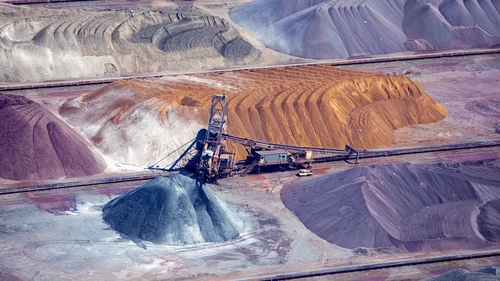At Nordea we’re actively supporting our customers’ transition through financing and other financial services as we believe it’s an effective way to accelerate the transition to a low-carbon economy.
To support this societal shift we have set a medium-term target for 2030 which is to reduce carbon emissions across our lending portfolio by 40-50% compared with 2019. Over the last years we have succeeded in making substantial cuts, and the latest data shows that the target is within reach as we reached a 36% reduction at the end of 2024.
Most of Nordea’s financed emissions are generated by corporate customers in carbon-intensive industries, such as shipping, agriculture and power production. To monitor our progress, we have implemented science-based carbon emissions reduction targets for eight of these climate-vulnerable sectors. The targets cover the majority of our financed emissions and approximately two thirds of our lending exposure.
The 36% reduction is achieved through changes in Nordea’s sector exposure, for instance, lower exposure to oil and gas and exit from offshore, and through our customers’ emissions reductions. The majority of the customer-driven reductions is noted in the power production sector, where we are seeing good progress towards increased production of low-carbon electricity in the Nordic countries.
Nordea publishes enhanced disclosure for the oil and gas portfolio
Nordea has significantly decreased its exposure to the oil and gas sector since 2019, making it one of Nordea’s smallest sectoral exposures by year-end 2024, accounting for approximately 0.1% of total lending. Nordea regularly reviews and updates its sector guidelines for different sectors and has recently updated its sector guideline for fossil fuels. In addition to this update, Nordea has also published an enhanced disclosure for the upstream oil and gas sector, bringing additional transparency to exposures, targets and policy commitments for the sector.
Given the critical geopolitical situation and the societal responsibility we have as the major bank in the region, we recognise the challenge in transitioning away from fossil fuels in the short term while at the same time securing a stable energy supply in Europe. We remain very diligent in our customer risk assessments and will continue to only support a few industry leaders, mainly operating on the Norwegian continental shelf, which play a crucial role in providing energy security and in enabling an orderly energy transition in Europe.
Before the invasion of Ukraine, Russia provided more than 40% of Europe’s total gas imports. As over 30% of the households in EU are heated using gas this has been a challenging situation. Today Norway provides almost half (47% in 2024) of the EU’s imports of natural gas in gaseous form.
“The societal transition is of utmost importance and supporting our customers’ transition is a top priority for Nordea. For the upstream oil and gas sector we have decreased our financed emissions by 74% since 2019 and are clearly below the International Energy Agency’s (IEA) net-zero emissions reduction path. It is crucial for us to support an orderly transition, supporting stability in the Nordics,” says Anja Hannerz, Head of Group Sustainability at Nordea.
Building on the momentum from the work we have during the past years, we remain committed to continuing to progress towards our strategic long-term ambition and will do this by transitioning together with our customers, supporting an orderly transition with stable and affordable energy in the EU and delivering on our promise to our local societies as a safe and trusted financial partner.



